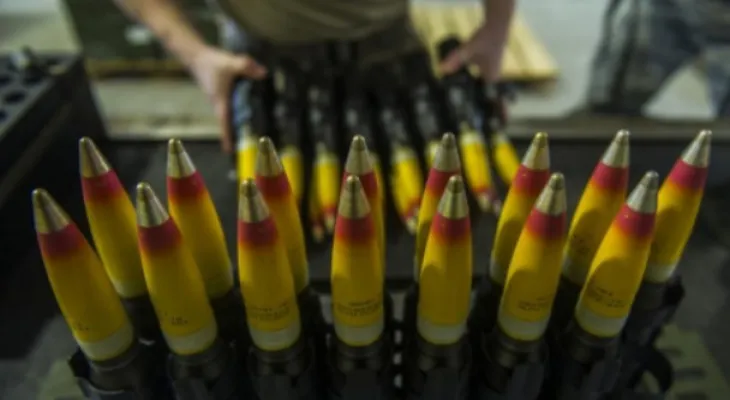Search here
Newspaper
Search here

Arab Canada News
News

Published: September 7, 2023
Depleted uranium munitions, which Washington has announced its intention to supply Kyiv with, are capable of penetrating heavy armor but are controversial due to the toxic risks to military personnel and the population.
What are depleted uranium munitions?
Depleted uranium is one of the products of the uranium enrichment process, and it is approximately 60% less radioactive than natural uranium.
It is an extremely dense metal, with a density 1.7 times that of lead, and it is so hard that it does not deform when it strikes its target. Therefore, depleted uranium is used in armor-piercing projectiles and bombs to enhance their penetrating ability.
This type of ammunition is particularly used for its ability to penetrate armor, according to the National Security Council at the White House, which confirmed that this ammunition is "not radioactive" and "not even close to being classified as nuclear weapons."
International law does not prohibit the use of such munitions.
Where has this ammunition been used in the past?
Many militaries possess this ammunition, including the U.S. Army and the Russian Army.
It was used during the Gulf Wars in 1991 and 2003, as well as in former Yugoslavia in the 1990s.
The Pentagon also acknowledged using depleted uranium bombs twice in 2015 in operations targeting the ISIS terrorist organization in Syria.
Britain announced months ago its intention to provide Kyiv with munitions containing depleted uranium, a move condemned by Moscow.
The announcement from Washington came on Wednesday as Ukrainian forces continue their counteroffensive against Russian troops.
During an unannounced visit to Kyiv on Wednesday, U.S. Secretary of State Antony Blinken stated that Ukraine is making "significant progress" in its counteroffensive.
What are the health and environmental risks?
According to the United Nations Environment Programme, depleted uranium is a "heavy metal and a chemically and radiologically hazardous pollutant." The impact of armor-piercing projectiles on a target produces uranium dust and metal shrapnel.
On the health level, "the primary risk is not from the radiation level but from the chemical poisoning," according to the Canadian Nuclear Safety Commission.
According to the same source, "ingesting or inhaling large amounts can harm kidney function. If someone inhales large quantities of small particles over a long period, the primary health concern is related to an increased risk of lung cancer."
Depleted uranium munitions have also been cited as one of the potential causes of health problems affecting former fighters in the Gulf War and the high number of cancer cases or even birth defects in the Iraqi city of Fallujah. However, their role in these diseases has not been scientifically proven.
Many studies have concluded that there is a lack of evidence proving harm caused by depleted uranium, but these results remain contentious.
According to studies associated with the International Atomic Energy Agency, "the radiological risk that the population and environment were exposed to was not high in cases where the presence of depleted uranium resulted in local environmental contamination in the form of small particles released at the time of impact," according to the United Nations Office for Disarmament Affairs.
However, "when fragments of depleted uranium munitions or whole munitions of this type are discovered, people who come into direct contact with these objects may experience radiation effects," according to the United Nations.
Comments